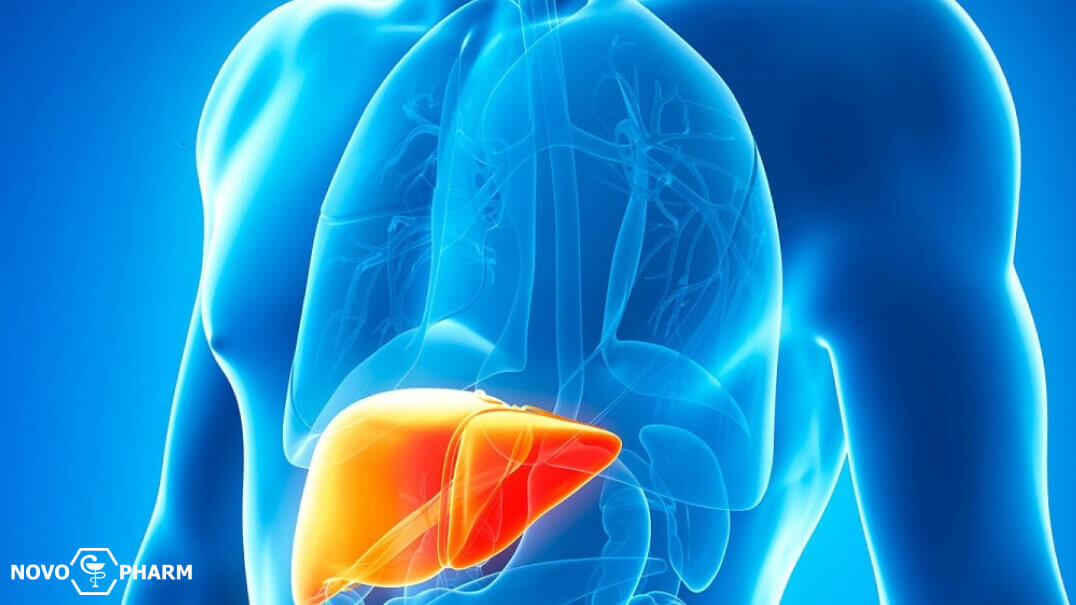Oral anabolic steroids differ fundamentally from injectable forms because they must endure first-pass metabolism in the liver, a barrier that dramatically alters their pharmacokinetics and toxicity profile. To survive this process, most oral compounds rely on 17-alpha alkylation — a structural modification that increases bioavailability but significantly heightens hepatotoxic stress.
This article outlines how oral steroids interact with hepatic metabolism, why they place a disproportionate burden on the liver, and what patterns of use amplify or reduce these risks.
Why orals hit the liver harder
Unlike injectable steroids, oral compounds must pass through the liver before they enter systemic circulation — a process known as first-pass metabolism. During this phase, the liver attempts to break down and deactivate foreign substances. Most unmodified steroid molecules are rapidly degraded, resulting in extremely low oral bioavailability.
To overcome this and allow the compound to survive first-pass metabolism, manufacturers use a structural modification called 17-alpha-alkylation. This alteration makes the molecule far more resistant to hepatic breakdown, but also substantially increases the metabolic load placed on the liver.
What 17-alpha-alkylation is
17-alpha-alkylation is a chemical modification added to oral steroid molecules to prevent them from being broken down during first-pass metabolism. By placing an alkyl group at the 17-alpha position of the steroid backbone, the compound becomes resistant to hepatic degradation, allowing it to reach the bloodstream in an active form.
However, this increased stability comes with significant drawbacks. Because the liver can no longer break the molecule down efficiently, it is forced to process the compound more aggressively and for a longer period of time. This leads to:
- heightened metabolic stress on hepatocytes;
- inflammation of hepatic tissue;
- increased risk of cholestasis (impaired bile flow);
- marked elevations in liver enzymes;
- disruptions in lipid metabolism (sharp drops in HDL and rises in LDL).
The very modification that makes oral steroids effective is also what makes them inherently hepatotoxic.
Why oral-only cycles are ineffective and carry elevated risks
Cycles built exclusively on oral anabolic steroids fall short of combined protocols in both effectiveness and safety. Oral compounds have a limited anabolic potential, short half-lives, and impose a higher systemic and hepatic burden, making them a poor foundation for sustainable progress. As a result, they produce modest, short-lived gains while markedly increasing physiological risks.
- Limited anabolic potential
Oral steroids typically exhibit shorter durations of action and a less pronounced anabolic effect compared to injectable agents. This reduces their ability to promote significant increases in muscle mass and strength and prevents the maintenance of a stable hormonal environment throughout the cycle.
- High hepatotoxicity
Due to the use of 17-alpha-alkylation, oral compounds place a substantially greater burden on the liver. This modification increases the likelihood of:
- cholestasis;
- elevated ALT, AST, and GGT levels;
- inflammatory changes in hepatic tissue.
- Severe disruption of lipid profile
Oral AAS consistently produce adverse lipid shifts, including:
- a sharp reduction in HDL;
- an elevation in LDL.
These changes significantly heighten cardiovascular risk, even during short-term use.
- Rapid loss of gains after discontinuation
Because oral steroids clear the system quickly and do not provide a sustained anabolic or hormonal foundation, most of the achieved gains diminish soon after the cycle ends.
Why prolonged oral cycles are even more dangerous
Extending oral steroid use intensifies their inherent hepatotoxicity. The problem is cumulative: cholestasis progressively worsens, liver enzymes rise in recurring spikes, and bile flow becomes increasingly impaired as hepatocytes struggle to keep up with continuous metabolic stress.
At the same time, long cycles deepen lipid disturbances — HDL drops further, LDL rises higher — increasing cardiovascular strain and amplifying systemic inflammation.
With ongoing exposure, these effects compound rather than stabilize, sharply raising the likelihood of actual liver injury, not just elevated markers. Prolonging an oral cycle does not enhance results; it only escalates the biological risks.
How to reduce the risks of oral steroids: practical add-ons to sell as a bundle
Because oral steroids place significant stress on the liver through first-pass metabolism and 17-alpha alkylation, they should not be sold as standalone products. A safer, more responsible approach is to pair them with targeted support supplements and clear usage guidelines. These additions do not eliminate toxicity, but they significantly reduce the most predictable hepatic and metabolic risks.
| Goal | What to Include | Notes |
| Support bile flow and reduce cholestasis | TUDCA; UDCA | Improves bile acid circulation and counters cholestasis. |
| Strengthen antioxidant defenses | NAC (N-acetylcysteine) | Increases intracellular glutathione; protects hepatocytes. |
| Improve lipid balance | High-dose omega-3 (EPA/DHA) Berberine | Supports HDL, reduces LDL; lowers cardiovascular risk. |
| Set clear usage boundaries | Cycle-length guidelines (short cycles only) Lab monitoring checklist (ALT/AST, GGT, bilirubin, lipid panel) | Helps users follow safer protocols and detect early toxicity. |
Conclusion
Oral steroids combine convenient administration with a structural modification that inherently increases liver strain, disrupts lipid balance, and accelerates cumulative toxicity during prolonged use. These characteristics make them fundamentally different from injectables and explain why oral-only or extended cycles carry elevated risk.
Understanding the mechanisms behind their hepatotoxicity clarifies how to approach them more responsibly and why targeted support strategies are essential for safer use.


